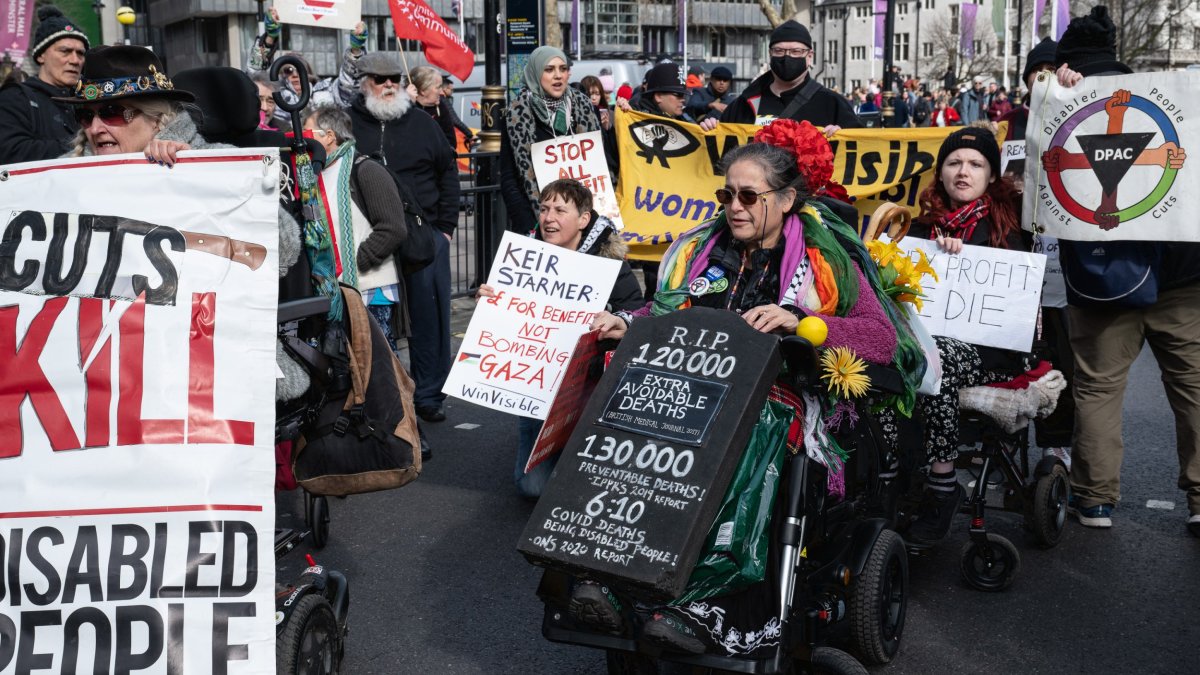Analysis Of Directives To Expedite Crime Control: Challenges And Solutions

Table of Contents
Challenges in Implementing Directives to Expedite Crime Control
Implementing effective directives to combat crime faces numerous obstacles. These challenges often intersect and compound each other, hindering progress towards safer communities.
Resource Constraints
Insufficient resources consistently hamper the effectiveness of crime control initiatives. This includes:
- Underfunded Agencies: Many law enforcement agencies operate with severely limited budgets, restricting their ability to hire and retain qualified personnel, invest in advanced technology, and implement comprehensive crime prevention programs.
- Lack of Training and Technology: Inadequate training for officers and a lack of access to crucial technologies, such as advanced forensic tools and crime mapping software, severely limit investigative capabilities and effectiveness.
- Inefficient Resource Allocation: Resources are sometimes misallocated, prioritizing reactive measures over proactive crime prevention strategies. This leads to a cycle of responding to crime rather than preventing it.
- Example: A department might prioritize overtime for responding to calls instead of investing in community policing initiatives.
- Example: A city might invest heavily in surveillance technology without sufficient personnel to monitor and analyze the data effectively.
Bureaucratic Hurdles and Legal Constraints
Navigating complex legal systems and bureaucratic processes presents significant obstacles:
- Lengthy Legal Procedures: The often cumbersome legal processes can lead to significant delays in investigations and prosecutions, hindering justice and potentially emboldening criminals.
- Lack of Inter-Agency Coordination: A lack of seamless information sharing and collaboration between different law enforcement agencies (local, state, federal) often impedes investigations and the effective implementation of crime control strategies. Siloed data prevents a holistic understanding of criminal activity.
- Resistance to Change: Established systems and ingrained practices within law enforcement and the justice system can resist necessary reforms and the adoption of more effective methods.
- Example: Resistance to implementing data-driven policing strategies due to concerns about privacy or bias.
- Example: Difficulties in coordinating resources and investigations across jurisdictional boundaries.
Community Engagement and Trust Issues
The effectiveness of crime control strategies is significantly impacted by the relationship between law enforcement and the communities they serve:
- Erosion of Trust: A lack of trust between law enforcement and certain communities, often stemming from past negative experiences and perceived biases, can hinder cooperation and information sharing, crucial components of effective crime prevention.
- Limited Community Involvement: Insufficient community involvement in the design and implementation of crime prevention programs can lead to strategies that are ineffective or even counterproductive.
- Underlying Social Issues: Crime is often linked to underlying social problems such as poverty, inequality, and lack of opportunity. Addressing these root causes is critical for long-term crime reduction.
- Example: High rates of unemployment and lack of access to education can contribute to increased crime rates.
- Example: Discrimination and systemic inequality can create feelings of marginalization and disenfranchisement, leading to increased crime.
Solutions to Enhance the Effectiveness of Directives
Overcoming the challenges requires a multi-faceted approach focused on strategic resource allocation, streamlined legal processes, and strengthened community partnerships.
Strategic Resource Allocation
Effective resource allocation is crucial for successful crime control:
- Prioritizing Prevention: Shifting funding towards evidence-based crime prevention programs, such as community policing and youth intervention initiatives, is crucial for addressing the root causes of crime.
- Investing in Technology: Investing in advanced technologies, like predictive policing software and data analytics tools, can improve law enforcement's ability to identify crime hotspots, predict future criminal activity, and allocate resources effectively.
- Enhanced Training: Improved training and professional development for law enforcement personnel are essential to equip them with the skills and knowledge necessary to address modern crime challenges effectively.
- Example: Training on de-escalation techniques, cultural sensitivity, and community engagement.
- Example: Investing in forensic training and technology to improve investigation efficiency.
Streamlining Legal Processes and Enhancing Inter-agency Collaboration
Improving the efficiency and effectiveness of the criminal justice system is vital:
- Simplifying Legal Procedures: Streamlining legal processes can reduce delays in investigations and prosecutions, ensuring swift justice and enhancing the deterrent effect of the law.
- Improved Inter-agency Communication: Implementing data-sharing initiatives and establishing clear communication protocols between different law enforcement agencies can improve information flow and enhance collaborative efforts.
- Joint Task Forces: Creating joint task forces to address specific crime problems, bringing together expertise and resources from multiple agencies, can significantly enhance effectiveness.
- Example: Joint task forces targeting organized crime or drug trafficking.
- Example: Improved data sharing platforms allowing real-time information exchange.
Strengthening Community Partnerships and Addressing Root Causes
Building strong relationships with communities is paramount:
- Building Trust: Law enforcement agencies must actively work to build trust and foster positive relationships with the communities they serve through community policing initiatives, increased transparency, and accountability.
- Community-Based Programs: Engaging communities in the design and implementation of crime prevention strategies, empowering them to be active participants in solutions, is crucial for long-term success.
- Addressing Social Issues: Addressing underlying social issues, such as poverty, inequality, and lack of opportunity, through social programs and investments in education and job training, can address the root causes of crime and contribute to safer communities.
- Example: Investing in after-school programs and youth mentorship initiatives.
- Example: Implementing programs to address housing insecurity and food insecurity.
Conclusion: Improving the Analysis of Directives to Expedite Crime Control
This Analysis of Directives to Expedite Crime Control highlights the significant challenges – resource constraints, bureaucratic hurdles, and community trust issues – that hinder effective crime prevention. However, strategic resource allocation, streamlined legal processes, and strengthened community partnerships offer promising solutions. Improving crime control directives requires a holistic approach that combines proactive crime prevention strategies with effective law enforcement and a commitment to addressing the root causes of crime. We must continue to analyze and refine our crime prevention policies to create safer and more just communities. We urge readers to engage with this issue by researching local crime prevention initiatives, advocating for policy changes supporting effective crime control strategies, and participating in community-based programs. Only through continued dialogue and action can we improve the effectiveness of directives and build safer communities for all. The need for ongoing analysis of crime prevention policies is paramount to enhancing public safety and creating a more just society.

Featured Posts
-
 Matt Damons Smart Career Moves Ben Afflecks Perspective
May 08, 2025
Matt Damons Smart Career Moves Ben Afflecks Perspective
May 08, 2025 -
 Ps 5 Price Hike Looms Where To Find Consoles In Stock
May 08, 2025
Ps 5 Price Hike Looms Where To Find Consoles In Stock
May 08, 2025 -
 James Gunns Daily Planet Photo A Subtle Superman Easter Egg For Jimmy Olsens 85th
May 08, 2025
James Gunns Daily Planet Photo A Subtle Superman Easter Egg For Jimmy Olsens 85th
May 08, 2025 -
 Imminent Benefit Cuts Dwps Planned Changes Explained
May 08, 2025
Imminent Benefit Cuts Dwps Planned Changes Explained
May 08, 2025 -
 Dodger Mookie Betts Misses Freeway Series Opener Due To Illness
May 08, 2025
Dodger Mookie Betts Misses Freeway Series Opener Due To Illness
May 08, 2025
Latest Posts
-
 Bitcoin Madenciliginde Yeni Bir Doenem Son Mu Baslangic Mi
May 09, 2025
Bitcoin Madenciliginde Yeni Bir Doenem Son Mu Baslangic Mi
May 09, 2025 -
 The Bitcoin Rebound What Investors Need To Know Now
May 09, 2025
The Bitcoin Rebound What Investors Need To Know Now
May 09, 2025 -
 Bitcoin Madenciligi Yaklasan Son
May 09, 2025
Bitcoin Madenciligi Yaklasan Son
May 09, 2025 -
 Analyzing Bitcoins Recent Rebound Opportunities And Risks
May 09, 2025
Analyzing Bitcoins Recent Rebound Opportunities And Risks
May 09, 2025 -
 Bitcoins Rebound Understanding The Factors Driving The Price Increase
May 09, 2025
Bitcoins Rebound Understanding The Factors Driving The Price Increase
May 09, 2025
